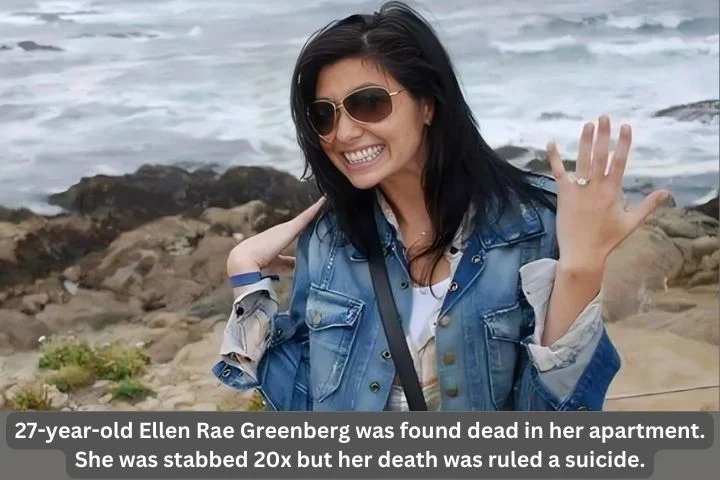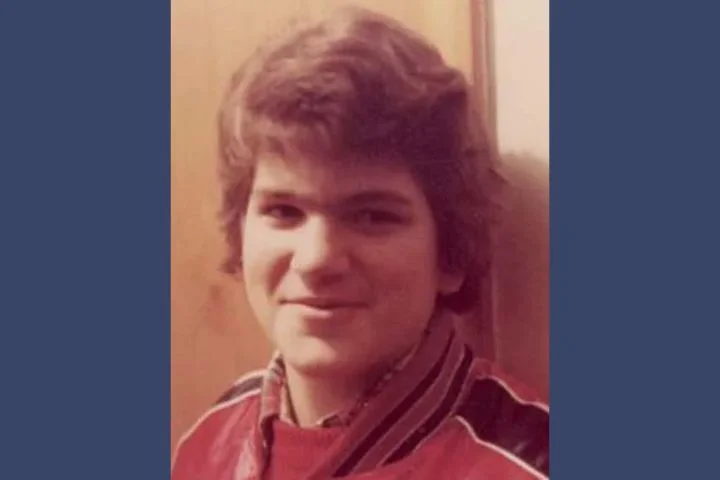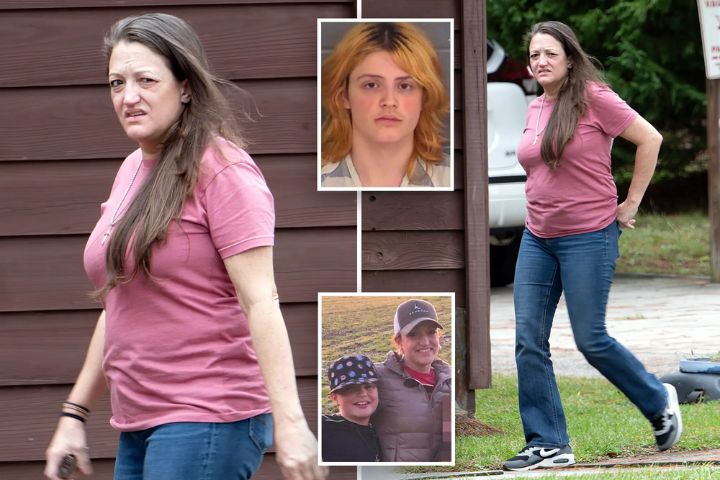Ellen was born on June 23rd of 1983. in New York City. Ellen is the daughter of Joshua Greenberg and Sandra Greenberg, who both work in the dental field. Joshua describes Ellen as a girly girl who was very athletic. Ellen is described as incredibly kind and a nurturing soul. Because of her nurturing characteristics, Ellen went into teaching, and many of her students absolutely adored her.
Ellen met a man named Sam who worked in the Tv industry. Sam was a producer for NBC. After being together for three years, the couple ended up getting engaged. Ellen was happy at this time in her life. They planned to have their wedding in August of 2011. Ellen’s father says that they were excited. She had finally found a man that she absolutely loved. He approved of the engagement and planned to help out with the wedding.
Before the tragedy
On January 26th of 2011, Ellen was on the way to work and spoke to her mother on the phone. It was a typical conversation. They talked about taxes and the snow falling there in Pennsylvania. The snow ended up getting worse, and the school was dismissed early. Ellen helped all of her students call their families and made sure everyone had a ride home. After all of her students were gone, she went and got some gas and went home. When she got home, the couple hung out for a little while, and then Sam went to go workout.
The tragedy and the evidence:
On his arrival, Sam realized their door was locked. It was unusual for her to be home and close the door. The door was not locked as usual it was closed with a swing lock. They only did this at night and never did it in the daytime. Sam texts her and tells her that he is home waiting at the door. He also says that he is getting aggravated and can not open the door. Sam started to worry when Sam got no response and went to security to ask them to open the door. The Security worker told Sam that he could not open the door for him because it is against the policy, so Sam decided to break in and have the security worker supervise it.
When Sam broke the door down, he was shocked. Sam found Ellen on the floor of their living room. When Sam saw her, he could tell that she was deceased. Ellen’s body was leaning against the cabinet, and Sam found a clean white towel in her hands. Sam immediately called the police, and the dispatch told Sam to start chest compressions immediately. Sam began CPR but soon realized a knife was lodged in her, so the dispatch officer told him to stop. When EMTs got to the scene, they couldn’t do anything to save her. Ellen was pronounced d*ead at 6:40 pm.
Right away, the police chose to treat the case as a su*icide. At the scene, the police found freshly cut fruit. There was a strainer with freshly washed blueberries.
They found no evidence of a break-in or forced entry. Ellen did not have any defense wounds either.
There was no evidence on Ellen’s body that she had tried to fight anyone off, and there was no evidence of blood outside of the kitchen area. The knife found in Ellen only had her DNA on its handle. Since the snow was so prevalent that day, they checked the snow for footprints, but nothing was found.
The day after Ellen’s de*ath:
Before going into the details of Ellen’s body, I would like to say that it may be disturbing for some readers. This is a caution.
The day after her d*eath, the medical examiner started the autopsy process. The medical examiner found eight sta*b wounds to her chest area, and they varied in depth. Some of the sta*b wounds only went .2 centimeters deep, while others went 4 inches deep. Ellen also had a two-inch sta*b wound to her stomach and a two-and-a-half-inch gash on her scalp. Ellen had ten sta*b wounds to the back of her neck and eleven bruises on her right arm, abdomen, and right leg. Some of these bruises looked old, and some of them looked like they were more recent. At the end of the autopsy, the medical examiner ruled the case as a homicide.
No one from the police station or the medical examiner’s office contacted Ellen’s family about the change in the case. The family found out about the change on the news.
A homicide:
Once the case was ruled a homicide, the Philidelphia homicide unit decided to step in and examine the situation. The homicide unit looked at Sam’s key fob records and tracked where he went in the complex. The homicide unit also was able to see that no one unauthorized entered the complex. Sam’s alibi was a match, and he was cleared from the suspect list.
A few days later on, January 29th of 2011, the police announced that even though the medical examiner ruled the case as a homicide, they were still looking at the situation as a suicide.
As the investigation continued, the investigators found out that Ellen’s mental health had most likely declined within the last two months of her life. People said that Ellen seemed anxious and worried about everything. When Ellen was asked about her emotions, she told people that it was her job. The police brought some teachers in from her school and interviewed them. The teachers told the questioners that Ellen seemed really stressed out by the job and did not seem to be any more stressed out with the job than other teachers.
Ellen’s parents said that Ellen had called them and told them she wanted to quit her job. Ellen also asked if she could move back into their house in Harrisburg. Ellen’s parents asked her if there was anything else causing her to think this way, and she told her parents that she was just stressed out. Her parents thought it was very odd for her to act like this due to her wedding being a few months away.
Ellen’s parents wanted her to go see a psychiatrist, and she did. Ellen had three visits with her psychiatrist, and it seemed to improve her mood and mental stability. In Ellen’s psychiatrist notes, the psychiatrist says that Ellen is not s*uicidal. Ellen was diagnosed with an adjustment disorder and anxiety. Ellen was prescribed multiple drugs to take, which list su*icidal thoughts and tendencies on the symptom lists.
At the time of Ellen’s dea*th, toxicology reports only have two of the four drugs prescribed to her in her system. No recreational drugs or other prescriptions were found. Zoloft, one of the anti-depressants, has been argued to be the possible cause for her dea*th. This is due to the symptom of su*icidal thoughts and tendencies.
After looking through her phone, they did not find any clues of su*icidal searches or texts.
The argument:
The police were looking at this as a s*uicide due to the lack of evidence of forced entry. Others argue that this could not have been su*icide because she had st*ab wounds on the back of her neck. Sta*bbing yourself in the neck is extremely difficult especially, on the backside of the neck. Research shows that about one to three percent of sui*cide attempts are by sta*bbings. Another thing people have been arguing over is the fact that Ellen sta*bbed herself multiple times.
The Neuropathologist:
The police decided to contact a neuropathologist to determine whether the st*ab wounds on the back of her neck severed the spinal cord. If the spinal cord was severed, that would render Ellen paralyzed before the st*ab wound that ki*lled her could have been inflicted. The neuropathologist told police that the spinal cord was hit, but the spinal cord was only damaged and not severed. The neuropathologist predicts this made Ellen go numb and could make the idea of Ellen st*abbing herself in other areas more believable. This would allow Ellen to inflict multiple st*abs on herself multiple times without pain. If this is true, Ellen st*abbed herself over 20 times, which is unbelievable.
Medical examiners decided to reverse the case back to su*icide after this finding.
The forensic pathologist:
After the medical examiner reversed the case back to su*icide, Ellen’s family decided to purchase all pictures and documents from the government and sent them to a forensic pathologist. The forensic pathologist’s name is Cyril West. He is known for contesting the single-bullet theory in JFK’s case. When he looked over the report, he was shocked to find that Ellen had so many sta*b wounds. Cyril looked at everything. Cyril said that he could not believe that the police ruled this as su*icide.
The family was eager to get things rolling in the case. They hired an attorney and the forensic pathologist to talk to the police about opening the case back up. Nothing came out of the discussion. The police denied access to records, and the family and the forensic pathologist were angry about this. The family went and filed for a public record request. The family eventually got access to the file information. But the family was not allowed to record or take notes about anything they were shown.
A retired police veteran, Tom Brennen, offered to work the Ellen Greenberg case for free outside of the government. He took a look at the files and said that it is not a done deal when someone does not have any defense wounds. It does not mean that it is definitely su*icide. The veteran also had experience with a case like this before. The veteran said that if this case was a homicide, it is called a blitz attack. This is where the murderer attacks the victim with such surprise, and the attack is so fast that the victim barely sees it coming.
A homicide prosecutor named Guy De Andrea asked to see the entire case file. When he looked into the file, he realized that there was not a neuropathology report. He asked the local police station and the medical examiner where it was, and they said it was either lost or did not exist. They also found out that the medical examiner didn’t even have a neuropathologist staffed there at the time.
Tom Brennen found out that the medical examiner had a piece of Ellen’s spinal cord at the office. Tom got in contact with a forensic pathologist to examine the spinal cord of Ellen Greenberg. The forensic pathologist concluded something different than the first supposed pathologist. The forensic pathologist concluded that one of the sta*b wounds penetrated Ellen’s cranial cavity and severed the cranial nerves and brain. As a result of this, Ellen would have been severely impaired or lost consciousness and would experience terrible pain. This forensic pathologist also concluded that there was evidence of strangulation.
As people were recruited, Henry Lee joined the team. Henry Lee has been seen in O.J. Simpson’s murder trial. He reviewed Ellen’s case and said that the number and types of wounds and bloodstain patterns were inconsistent with su*icide and were consistent in a homicide. This leaves us with a question… How did the door get locked from the inside if it was a homicide?
Tom showed there were many videos on youtube showing how to manipulate the swing lock from the outside. Another study has shown that most su*icides involving sta*b wounds are under the clothes and not above like Ellen’s were.
The police had said to the public that Ellen’s phone and computer were clean of any red flags. Other professionals said that the searches ‘quick su*icide’, ‘painless sui*cide’ and ‘su*icide methods’ were found on her laptop.
In 2019, the family filed a civil lawsuit against the Philadelphia medical examiner’s office and the pathologist. They were hoping to get the medical examiners to change the ruling from undetermined to homicide. To this day, the lawyers and other people on their team still agree that the situation is impossible. Other findings have been made. They found that two different knives caused the wounds. One is serrated, and the other being smooth. There was only one knife found, which was the one inside of her at the time.
Sam:
Sam has never done any interviews. He does not come out to the public. In 2020 some more information about Sam was released including, how Sam acted at the scene. Sam’s story was that when he was kicking down the door, the security man was with him. Phil, the security man, said that Phil never was with Sam. Phil also told the police that Sam was not wearing sneakers that day. He was wearing boots. This makes no sense because he was supposedly coming from the gym. Sam had also called two other numbers before calling 9–1–1. He called his parents and his uncle, which was an attorney. Both his parents and his uncle were on their way to the scene before 9–1–1 was even called. The dispatch officer also said that during the call, Sam was completely calm. The dispatch also reported that when Sam was asked to perform CPR, he asked, ‘do I have to?’ Sam realized there was a knife inside Ellen’s chest. Sam says to the dispatch that she probably fell on it.
Another discover shows that there was little to no blood at the cr*ime scene. This begs the question if someone had tried to clean the scene. There was no luminol test performed.
Recently it was announced to the public that the door was not kicked down. The door had little to no damage. The only damage was found on the lock, and one of the screws was missing. This screw was never seen again. Sam’s family returned to the cr*ime scene the day after and collected Sam’s devices and Ellen’s laptop and cellphone.
Support:
If you would like to support Ellen’s family and get any new information on the case, you can go to Facebook and look up Justice for Ellen and help spread awareness. Their Facebook also has a petition link you can sign that will hopefully make a difference in their case.






